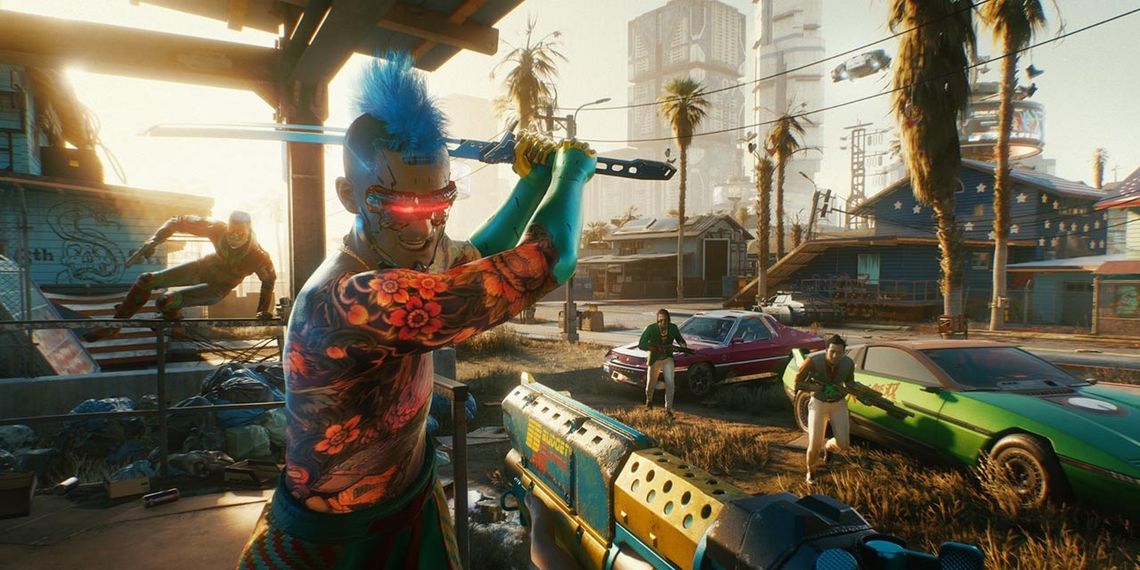Cyberpunk 2077 Got Government Money for Its „Living” City
In 2016, CD Projekt RED received a grant of $7.5 million from the Polish government. The company submitted 4 projects at the time. The aim of one of them was to develop the technology of a living city. As we see today, after the launch of Cyberpunk 2077, it wasn't entirely successful.

The launch of Cyberpunk 2077 evokes mixed feelings. On the one hand, the story is widely praised, on the other hand, the game's technical layer leaves a lot to be desired (especially in versions console versions). If we dig into in past and government projects, it turns out that the final effect was partially sponsored by Polish taxpayers. Turns out, in 2016 CD Projekt RED received PLN 28 million (around $7.5 million) in public funding under Smart Growth Operational Programme 2014-2020.
What is the Smart Growth Operational Programme 2014-2020?
Smart Growth Operational Programme 2014-2020 is the Polish implementation of the EU's cohesion policy. Its task is to strengthen relations between business and science - mainly by improving the quality of research and service innovation. It is also to increase competitiveness by supporting smaller entrepreneurs. The whole thing is financed from two sources - the European Regional Development Fund and national funds.
What did CD Projekt RED get the funding for?
In 2016, as part of the aforementioned project, the Polish National Centre for Research and Development co-financed 38 projects by Polish game developers. A total of PLN 116 million ($31.8 million) was allocated for this purpose. The largest piece of that cake, almost 90%, was then given to CD Projekt RED, which was to implement 4 projects:
- City Creation - this technology was to enable the creation of "living" and playable worlds based on artificial intelligence technology. Within the scope of this project, the company was also to develop "innovative processes and tools supporting the creation of the highest quality open-world games". For this purpose, CD Projekt RED received almost $2.7 million. It was the most expensive project that received funding at the time;
- Seamless Multiplayer - as part of the project, a technology for creating multiplayer games was to be created. For this purpose, almost $2 million was granted;
- Cinematic Feel - thanks to the development of this technology players were to experience "cinematic quality in RPGs". For its development a grant of almost $1.2 million was awarded;
- Animation Excellence - this technology was to improve the quality of body and face animation in video games. Over $1.5 million was awarded for this purpose.

Here's a detailed summary of the grant. PLN 10 million equals to around $2.7 million. Source: https://www.ncbr.gov.pl/fileadmin/gfx/ncbir/userfiles/_public/fundusze_europejskie/inteligentny_rozwoj/gameinn/lista_rankingowa_3_1.2_2016_poir__gameinn.pdf
What came out of the grant?
While the applications for Seamless Multiplayer cannot be evaluated at this point, we can still look at the other three projects. The effects of Cinematic Feel and Animation Excellence technology are certainly visible in Cyberpunk 2077. For example, it is enough to look at a character in a mirror and have them make different faces. This way you can test your character's facial expressions.
The problem is the City Creation technology. Many players agree that the demands of the project were not realized in Cyberpunk 2077. One of the biggest problems plaguing Night City is the AI of its inhabitants. No wonder that after the game's launch, video showing the problems associated with this aspect of gameplay flooded the Internet. Here's an example.
And here the question arises: did the funding of Cyberpunk 2077 pay off? The answer is not entirely clear. The biggest project for which CD Projekt RED got the money - City Creation - is not working properly. It's possible that the development of this technology turned out to be more expensive and time-consuming than originally assumed. However, this does not justify the fact that at this point in time it is a failed experiment, which was partly financed with public money. On the other hand, we have two projects that have not been entirely unsuccessful.
- Cyberpunk 2077 Review - Samurai, You've Got a Great RPG to Play!
- Cyberpunk 2077 - game guide
- Cyberpunk 2077 Without Secrets - A Handy Guide to Night City
- Cyberpunk 2077 - official website
- Cyberpunk 2077 and many other games received AMD FSR 4 support thanks to modders
- When developing Cyberpunk 2077: Phantom Liberty, a dev from CD Projekt Red experienced a „personal nightmare.” Its source was Idris Elba
- CD Projekt records „third highest profit” in company's history. The Witcher 4 trailer made „the universe revived in the minds of players”

